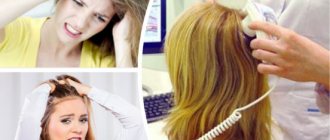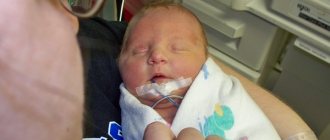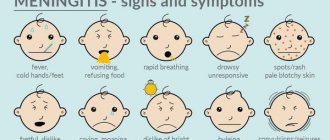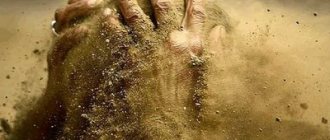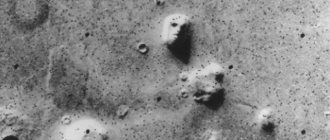The term trichotillomania comes from the Greek words trichos (hair), tillo (pulling out), mania (attraction). This is an impulsive mental disorder, expressed in an irresistible urge to pull out hair in different parts of the body. It was first described in 1889 by the French dermatologist Allopo F.A.
Trigger
According to official data, about 5% of people worldwide suffer from trichotillomania. But this figure is inaccurate, since the lion's share of patients hide their addiction. People are able to hide their addiction for 20 years.
The majority of patients are women. More often, the disease debuts in childhood or adolescence, less often in the range of 20-30 years, and even less often after 40.
The development of the disease is based on the emerging feeling of tension and anxiety. The cause may be a guilt complex, fear, anger, anger and many other conditions that provoke a feeling of anxiety.
The skin where hair grows is well innervated thanks to a dense network of nerve fibers. This increases her sensitivity. A person who pulls out a hair feels pain. In this way, the patient switches attention from mental stress to physical sensations.
Self-inflicted pain acts as a way of self-punishment. Trichotillomaniac uses this method to relieve the stress that torments him. Endorphins, released under the influence of painful impulses, give a feeling of satisfaction, but only for a short time. Soon the feeling returns. The process is repeated.
There is an assumption that the disorder can also satisfy masochistic desires. Allegedly, the patient deliberately intensifies the pain in order to subsequently receive pleasure when the pain subsides. But this theory is just a guess.
Features of post-Covid hair loss
- Research shows that hair loss after Covid-19 occurs, on average, 2 months after the illness. Moreover, there is a correlation between the severity of the infection, the intensity of therapy and the activity of hair loss.
- A distinctive feature of hair loss after a coronavirus infection is the high activity of hair loss, sometimes so intense that it “scares” patients, aggravates their psycho-emotional state, causing additional stress.
- On examination, a sharply positive tension test, the so-called “pull-test”, is noted; According to the results of instrumental diagnostics, the percentage of telogen hair (loss) reaches 25-30% (with a physiological norm of no more than 10-15%), which indicates a high degree of involvement of hair follicles in the pathological process.
- There is also slow, insufficient hair growth “to replace lost hair,” which is usually not typical for diffuse telogen effluvium due to deficiencies, stress, etc.
- However, do not despair; trichologists note that hair loss in most cases is temporary and reversible. In the majority of cases, hair loss follows the path of post-infectious telogen effluvium. On average, the process of stabilization and restoration of normal hair growth in this form is observed within 6 months, while restoration of hair volume takes a longer time.
- Concerns arise only in those cases when the hair follicle does not enter a new cycle and a latent period begins in which regrowth does not occur. The reasons are not clear at the moment, but the frequent debut after suffering from Covid of such forms of hair loss as cicatricial and alopecia areata indicate the role of immune disorders in the area of the hair follicle.
Hair loss after Covid - what to do?
Taking into account the specifics of the hair loss process after COVID-19, if characteristic complaints appear, you must immediately contact a specialist to select the necessary therapy and ensure dynamic monitoring of adequate hair restoration.
However, it is not always possible to see a trichologist, so the trichologists at the Trichology Center give advice on what to do when faced with hair loss after coronavirus.
- Hair loss is most likely temporary, so you need to calm down and stop panicking.
- Don't count lost hair. Counting lost hair only aggravates the psycho-emotional stress associated with hair loss and in no way helps to objectively assess the activity of the process.
- Increase the frequency of hair washing, at least do not limit it, and do not switch to cleansing the scalp more rarely. By accumulating dead hair (remember that the hair loss stage lasts 2-3 months) and poorly cleansing the scalp of sebaceous secretions, we can delay hair loss and contribute to the occurrence of inflammation on the skin.
- Switch to the use of antiseborrheic, sebum-regulating shampoos and exfoliant peels to cleanse the scalp of excess sebaceous secretions at the mouths of the follicles, stimulating the regeneration of hair and hair. Such products contain antifungal components - climbazole, piroctone olamine, undecylenic acid, as well as abrasive particles (apricot kernel powder), salicylic acid.
- Use lotions to reduce hair loss and hair growth stimulants - drugs that promote regrowth, thicken new growing hair, and also prevent the formation of new hair loss. growth simulators contain aminopyrimidine and purine bases - for example, lotions with copyrrole and lotions with aminexil.
- Check vitamin D levels and rule out iron and zinc deficiency. If it is detected, medications are taken for correction.
- Start taking multivitamin complexes containing B vitamins, pantothenic acid and biotin, niacin, omega-3 fatty acids (EPA and DHA), and antioxidants.
The correct approach to hair loss during the acute period helps to shorten the period of loss and promote the complete restoration of hair volume.
Soil for the development of the disease
Trichotillomania is provoked by various reasons:
- Scientists are conducting research to confirm the genetic nature of the disease. It was found that the same gene, SLITKR1, was damaged in a number of patients.
- Trichotillomania becomes a manifestation of a number of other mental disorders - schizophrenia, depression, neurosis, dementia. It is a symptom of bipolar affective disorder. In most cases, pathological hair pulling is a compulsive action within the framework of OCD - obsessive-compulsive disorder.
- The disease provokes organic damage to the brain.
- Lack of serotonin becomes a provocateur of the disorder.
- Hormonal surges can rightfully claim a role in the occurrence of trichotillomania. The theory is confirmed by the fact that the disease flourishes in adolescence.
- The disorder often develops in people with a special personality type – suspicious, scrupulous, sensitive.
- Trichotillomania can be triggered by severe or prolonged chronic stress. The strongest emotional tension that arises during stress requires an outlet and finds it in such a perverted form.
Diagnosis of trichotillomania
Hair pulling is not a health-threatening phenomenon, but these obsessive actions worsen a person’s quality of life and lead to social maladjustment. This disorder requires treatment.
Diagnosis of trichotillomania is based on certain criteria:
- a person pulls out hair in such an amount that leads to baldness or significant thinning of the hairline;
— independent attempts have been made repeatedly to get rid of obsessive hair pulling or reduce its intensity, but they did not lead to a positive result;
- pulling out hair causes suffering to the patient, depresses him, and reduces his ability to function normally.
How it manifests itself
The disease manifests itself suddenly. The patient begins to pull out hair on any part of the body:
- more often - on the head;
- brows;
- eyelashes;
- pubis;
- armpits;
- stomach;
- breast.
As patients themselves note, the desire to pull out hair is so strong that the impulse cannot be drowned out. After completing the action, a feeling of pleasant relaxation appears.
For a trichotillomaniac, hair pulling is a ritual. The strand is wound around the finger in a special way. If the hair is short, it is clamped in a certain way.
The boy fixed the hair bun between his index and middle fingers. The big one pressed it against the index finger, then, using a scrolling method, pulled it out hair by hair. According to the mother, the entire scalp was removed in this way. Afterwards the baby switched to eyebrows and eyelashes.
After the ritual, the person must make sure that the hair is removed. The patient passes the strand between the teeth and bites off the onion.
Typical is trichophagia - eating torn strands. It happens that the patient even eats other people's hair. The phenomenon was noticed back in the 18th century: a French doctor discovered a hairball in the gastrointestinal tract in a 16-year-old boy.
In addition to trichophagia, trichotillomania is accompanied by nail biting and skin trauma. Patients pull out hair from animals and pull threads out of fabric.
Another type of disorder is trichothema mania : a person “thins out” gray hair, believing that in this way he relieves itching.
Pulling out hair strands can be total, to the point of complete baldness, or zonal. Bald skin has a normal appearance with clearly defined follicular ostia.
A trichotillomaniac performs the ritual consciously and unconsciously. Unconsciously, the process occurs in a state of boredom, loneliness, while performing everyday activities - talking on the phone, watching TV, reading a book. Unconscious impulses are born both in a calm state and during a period of peak tension. After complete auto-depilation, a person becomes bewildered when those present tell him about what he did, since he does not remember how he performed the ritual.
Carrying out the procedure consciously, the patient carefully prepares for it. Prepares instruments, tries to retire.
People with trichotillomania carefully hide the areas of forced baldness. To do this, they use improvised methods. They wear hats, scarves, and wigs. Eyebrow tattooing and eyelash extensions.
Trichotillomania: pathological hair pulling on the head
Each of us has our own unique habits, manners, and weaknesses. However, can the manner of curling curls and pulling out hair be called an acquired habit that a person can easily get rid of? According to scientists, the tendency to pull out hair is not a patterned action. The obsessive habit of pulling out hair is a special type of compulsive action, considered within the framework of obsessive-compulsive neurosis. When the pathology persists, symptoms similar to those of obsessive-compulsive disorder are demonstrated. The scientific name for the tendency to pull out hair on the head and other parts of the body is trichotillomania. The main manifestation of the anomaly is an unconscious, uncontrollable, uncontrollable obsessive need to pull and pull out hair. The “affected” areas are most often the hair on the head, but hair on other surfaces of the skin, for example, hairs on the eyebrows or eyelashes, can be “destroyed.” Trichotillomania is most often recorded in young children and adolescents. However, the habit of pulling out hair can also appear in mature adults. It has been established that such an obsessive “weakness” most often develops among representatives of the fair half of humanity. In comparison, men indulge in such obsessive actions half as often. Trichotillomania: Why people pull out their hair
Many people believe that hair pulling is a stupid habit that many children develop because they simply have nothing to do with their hands. This is an incorrect and dangerous misconception. For some children, the need to pull out hair is an unconscious protest against existing situations. Thus, the child may express silent indignation that he is humiliated, insulted and oppressed by adults. The habit of pulling out hair can be a way to attract the attention of parents, with the help of which kids want to receive the necessary portion of affection and love. Often, a tendency to self-harm is observed in children who grow up in an antisocial family with drinking parents. Unable to change the situation, they often blame themselves and unconsciously harm their “worthless” personality. A common cause of trichotillomania is a genetic tendency to psychotic reactions. The child will inherit incorrect patterns of responding to stressful situations from his parents. Without knowing constructive methods for removing psycho-emotional behavior, the child will try various options for self-soothing. In this case, hair pulling is nothing more than an attempt to relieve nervous tension and achieve psychological comfort. The cause of trichotillomania in adolescents and adults may be hidden in the existence of internal conflicts and the presence of intractable problems. Self-doubt, denial of one’s own capabilities, self-accusation of all mortal sins “require” some kind of reinforcement by action. Since a person instinctively cannot cause any serious injury to his body, he chooses “small pranks.” In such a situation, the tendency to pull out hair acts as a specific method of “punishment.” Trichotillomania often manifests itself during periods when a person is at a crossroads and does not know what to do correctly. Exhausting doubts, fear of worsening the situation, fear of making a mistake, anxiety about the future have a depressing effect on the individual’s psyche. The tendency to pull out hair is an attempt to delay the moment of decision. The subconscious endows a person with such obsessive actions, arguing for the phenomenon that the person is now “busy” with other tasks, and he has no time to think about solving the problem. For some people, pulling out vegetation is a kind of ritual that helps them concentrate on the work at hand. The need to concentrate on one task often comes up against a person’s inability to consciously organize his mental activity. Therefore, the subconscious “creates” some rituals that facilitate the process of work. A conditional connection is established, the essence of which is: productive work and composure are possible only with simultaneous hair pulling. Today, in medical circles, a very interesting hypothesis is being studied about the causes of obsessive-compulsive disorders. Scientists suggest that the culprit for the appearance of obsessive thoughts and actions is the presence of PANDAS syndrome in the patient, as a manifestation of a persistent streptococcal infection. The essence of this hypothesis is this: as a result of a streptococcal infection entering the human body, the immune system begins to produce antibodies to suppress the enemy agent. When the produced lymphocytes become abundant and their excessive activity is observed, a failure occurs in the immune memory, as a result of which the produced antibodies begin to destroy the tissues and cells of their own body, “confusing” them with harmful microbes. Such hypertrophied immunopathological activity destroys some brain structures. As a result of the resulting defects (in particular, swelling of parts of the brain), a person develops obsessive-compulsive disorder. That is, it is not the streptococcal infection, but the excessive response of the immune system and the antibodies produced that can cause obsessive actions. There is another point of view about the origin of trichotillomania. Some scientists put this anomaly on a par with addictions such as alcoholism and drug addiction. As with other forms of addiction, a patient with this disease experiences:
- unconscious urge to engage in self-harming behavior;
- awareness of the harm from the actions taken;
- loss of control over behavior;
- deep dive into manipulation;
- feeling of decreased anxiety when performing a process.
- pharmacological therapy;
- psychotherapeutic influence;
- conducting hypnosis sessions.
Trichotillomania: how the disorder manifests itself
A feature of trichotillomania is the regular occurrence in an individual of the need to pull out hair.
If the subject does not have the opportunity to achieve what he wants, he is overcome by a wave of irritation, anger, anger, and aggression. By pulling out hair, a person achieves a feeling of mental comfort, his emotional stress disappears, and his mood improves. Some people with trichotillomania experience pleasure from the very process of tearing out their hair. Another characteristic feature of people suffering from trichotillomania is a lack of understanding of the cause of their addiction. Patients cannot explain why and why they pluck their hair. They cannot point to the factors that gave rise to such a habit and consolidated it. The desire to “thin out the vegetation” arises in them unpredictably and spontaneously. However, most people experience excitement and internal tension before the upcoming manipulation. Patients with trichotillomania use more than just their fingers to pull out their own hair. They can pluck the hairs with tweezers or pull them out with nail clippers. The result of trichotillomania is the same - a noticeable decrease in hair on the head, early formation of bald spots, the appearance of spotty areas on the skin, problems with the skin. For this reason, many victims of the disorder are forced to disguise their flaws, for example, by using wigs or constantly wearing hats. Camouflage techniques also include using false eyelashes or tattooing plucked eyebrows. In severe cases, patients with trichotillomania are forced to limit their social contacts and avoid being in public places. It is people's worries about their spoiled appearance that make them think about the existence of a problem and motivate them to take some measures. At its core, the act of pulling out hair does not create any inconvenience for people. Trichotillomania in its development can give rise to a more complex obsessive state - an irresistible need to eat plucked hairs. This mental disorder is called trichotillophagia. According to published data, the habit of eating one's own hair is observed in 10% of patients with trichotillomania. This disorder is fraught with deterioration in the functioning of the digestive system, in particular: clogging of the gastrointestinal tract with hairballs. People suffering from trichotillomania often feel shame and embarrassment due to the compulsive need to pull out hair. Many subjects try to disguise their actions from others as thoroughly as possible. Since the manipulation of hair removal takes a lot of time from a person (the duration of the procedures can reach 15 hours a day), patients have to deliberately isolate themselves from society. Isolation interferes with studies, full fulfillment of work obligations, and the building of personal relationships. Therefore, many people with trichotillomania become lonely and eventually develop severe depressive disorders. Trichotillomania: how to stop pulling out hair
According to most doctors, trichotillomania requires complex treatment, selected solely taking into account the individual characteristics of the patient. The optimal solution to overcome the disorder is a combination of:
Drug treatment of trichotillomania is aimed at improving the psycho-emotional state of the patient. Thanks to the use of modern antidepressants, it is possible to improve the subject’s mood, free him from melancholy and despondency, and relieve him of ideas of self-blame. Antidepressants help stabilize the process of falling asleep and relieve insomnia. The most effective treatment for trichotillomania is the tricyclic antidepressant Clomipramine. This drug has a psychostimulating, thymoleptic and sedative effect. If severe anxiety dominates in a patient with trichotillomania, it is recommended to administer a short-term course of benzodiazepine tranquilizers. Anxiolytics demonstrate a calming, muscle-relaxing, anti-anxiety effect. Most often, for trichotillomania, Phenazepaitium is used, which is superior in anti-anxiety effect to other tranquilizers. If the disorder persists, it is recommended to include atypical antipsychotics in the treatment program. They reduce the severity of automatisms, phobias and aggression. Psychiatrists in the treatment of trichotillomania prefer the use of a group of selective monoamine antagonists, prescribing Risperidone to the patient. It should be noted: if the dosage is incorrectly selected, the symptoms of obsessive-compulsive disorder may be aggravated and other undesirable effects may occur.
Therefore, the choice of antipsychotics can only be made by an experienced, certified physician after a thorough examination of the patient’s medical history and assessment of potential risks. Often, mood stabilizers are included in the treatment program for trichotillomania. They have a central muscle relaxant and sedative effect. They stabilize the mental state of patients and help improve their mood. The patient may be prescribed Valproic acid (Acidum valproicum). One of the main methods of treating trichotillomania is psychotherapy. During psychotherapeutic sessions, the patient develops and consolidates new functional habits and acquires constructive self-soothing skills. Cognitive behavioral psychotherapy helps a person develop the ability to calmly and calmly experience uncomfortable thoughts and ideas, feelings and sensations, filter emerging desires and manage needs. The most effective method for getting rid of the desire to pull out hair is a popular technique of cognitive behavioral psychotherapy - habit reversal training. This technique is based on the postulate that pulling out vegetation is a unique response to the influence of specific provoking factors. In this case, the subject most often is not aware of such triggering mechanisms, called triggers. During sessions, the person with trichotillomania becomes aware of how to recognize these triggers and learns alternative ways of behaving when exposed to such stimuli. Another proven technique in the treatment of trichotillomania is the Stimulus Control method. This technique involves the use of specific “habit blockers” that make it possible to limit a person’s ability to pull out hair. In parallel with this, the patient is taught the method of cognitive restructuring, due to which the subject becomes able to control his thoughts in response to the desire to pull out his hair. How to get rid of the desire to pull out your hair once and for all? The answer is obvious - it is necessary to establish the true cause of trichotillomania and eliminate its direct instigator. Because the triggers of the disorder are often not recognized or understood by the person, it is necessary to temporarily change the patient's condition by removing vigilant control of his consciousness. This is possible by immersing the patient in a hypnotic trance - a natural half-asleep. In such a relaxed state, the protective blocks of consciousness are removed, and access to the depths of the psyche - the subconscious - is opened. Identifying the triggers of trichotillomania and then addressing the cause of the disorder can eliminate the abnormal urge to pull out hair. During a hypnotic trance, the doctor introduces functional attitudes, a constructive model of behavior, and useful habits into the unconscious sphere of the psyche. After psychotherapeutic work and hypnosis, a person begins to react differently to intrusive thoughts that appear. He becomes able to resist the need to tear out his vegetation. He begins to demonstrate different behavior when exposed to factors that provoked an attack of trichotillomania.
Childhood variant of the disorder
The development of trichotillomania in children is primarily influenced by the way they are raised:
- The disorder in most cases develops in a child with a developed sense of guilt or an inferiority complex. This is facilitated by raising children in an atmosphere of increased severity, total control, constant reprimand and inflated demands;
- overprotective parenting model;
- coldness, lack of attention. So, a 4-year-old boy pulled out all the hair on his head. When his mother brought him to the reception, during the conversation it became clear that the boy was experiencing an acute lack of parental love. The father drinks heavily, so he does not pay attention to his son. The mother works two jobs to support the family. Due to lack of time, he communicates little with the child;
- conflicts between parents, their parents' divorce.
The lack of an emotional response from loved ones also affected the 9-year-old girl Lena. She did not have a father, her mother paid little attention to her daughter, devoting all her free time to organizing her personal life. Lena has a guilt complex. The girl believes that she caused her mother a lot of grief. She is constantly told stories about how her mother suffered during pregnancy. The birth itself caused complications in the uterus, which had to be removed.
Lena went to kindergarten early. The girl let her mother go every morning with tears. The woman did not show a drop of sympathy. The child had to be calmed down by the teachers.
At the age of 5, Lena developed a tendency to pull her hair while lying in bed before going to bed. Unnoticed bald patches appeared on the head. The mother took the child to the doctor who prescribed treatment. There was no desired effect after therapy. They did not find out the reason.
Only at the age of 9, when the girl went completely bald, became fearful and closed, did Lena’s mother take her to a psychiatrist, who diagnosed trichotillomania.
In childhood, the disease begins to manifest itself after 3 years. Such kids carry out auto-depilation uncontrollably: while playing, watching cartoons, and also in situations of stress. The child does not try to hide pathological actions.
In adolescents, in addition to the costs of education, trichotillomania is provoked by a tense environment in the school community and problems in communicating with peers.
Adolescent trichotillomaniacs are already prone to deliberately causing hair mutilation to themselves. They perform rituals manually or prepare tweezers. The procedure requires privacy. The disease brings them discomfort. Children try to control their actions, but control over rituals only strengthens their manifestations.
A 13-year-old girl went on summer holidays with a friend and her family to relax at their dacha. The girl was so struck by her friend’s warm relationship with family members, in contrast to her relationship with her parents, that two weeks later the mother did not recognize her daughter. Upon arrival home, the girl returned completely without eyelashes. Trichotillomania was triggered by contrasting relationships between parents and children in different families.
The clinical picture of the disease is similar in adolescents to adults. There is an element of awareness of the mutilation. Teenagers also try to hide traces of auto-depilation: they wear hoods and robes. Often, a half-plucked eyebrow becomes an indicator.
Etiology of trichophagia:
Most psychiatrists agree that the reasons for the development of trichophagia may be, in particular:
- Deficiency of maternal love;
- Fear of being alone;
- Death of loved ones;
- Alcoholism and drug addiction;
- Depression;
- Inferiority complex.
As you have already noticed, there are all the prerequisites for the onset of the disease in childhood, including early childhood. And indeed, the tendency to the pathology in question really manifests itself quite early. Indirectly, children who twirl their hair around their fingers can be considered a “risk group” during experiences or moments of concentration.
Usually, children understand well that eating hair is bad, they try to hide their desire to do this from adults, and retire to indulge in trichophagia. Children deviate from relevant questions and hide the habit from parents and doctors.
Regarding character, such children have excellent communication skills, developed leadership qualities and good performance in school. Often, these children grow up in authoritarian families, where pedantry and adherence to clear rules are encouraged. Eating hair can be triggered by a feeling of discomfort and guilt when deviating from the algorithm of behavior set by strict parents.
What are the dangers of trichotillomania?
The consequences of the disease include physical and social impairment.
Among the physical consequences, it is worth highlighting the damage to the gastrointestinal tract that occurs when eating hair. During the process of trichophagia, a bezoar is formed in the stomach - a hairball. It causes a lot of inconvenience - from stomach pain to indigestion. The extreme of this disorder is called “Rapunzel syndrome” - a condition where a strand of hair extends from the stomach into the intestines.
Rapunzel syndrome is an extremely dangerous phenomenon that threatens the patient with death. A case was described in which a hairball weighing 4 kg was removed from a girl’s gastrointestinal tract.
In addition, eating hair affects the condition of tooth enamel.
Skin that is traumatized at the site where the hair follicle is pulled out can become infected. In addition, if you systematically remove hair in a certain area over a certain period of time, it grows more slowly. On the head, in the area of eyelashes, eyebrows, complete baldness becomes an aesthetic problem.
The absence of eyelashes provokes vision problems:
- inflammation of the eyelids, mucous membranes of the eyes;
- conjunctivitis;
- blepharitis;
- furunculosis;
- microtrauma of the eye.
Socially, the disease causes no less problems than physically. Patients realize the absurdity of their condition, hide their pathological tendencies and unattractive consequences. They try to fight, but it doesn’t work out well alone.
It is worth noting that society is poorly aware of the problem of trichotillomania. Therefore, an unevenly bald person without eyebrows and eyelashes involuntarily causes bewilderment and sarcasm on the part of others.
Self-flagellation and public bullying make trichotillomaniacs depressed and force them to isolate themselves from their surroundings, which threatens complete social isolation, loss of friendly contacts, and loss of self.
Glossary of terms
In this section we have collected all the terms that you might encounter in this article. Gradually, we will collect from these explanations a real dictionary of a narcologist-psychiatrist. If some concepts remain unclear to you, leave your comments under the articles on our site. We will definitely help you figure it out.
Rapunzel syndrome
– a situation when a hairball is in a person’s stomach, and a long “tail” stretches into the intestines. A direct consequence of the desire to eat hair.
Trichotillomania
– a person’s pathological need to continually pull out hair on the head or other parts of one’s body. Trichotillomania occurs approximately twice as often in women as in men. Considered a mental disorder, often associated with stress.
Trichophrenia
– a mental disorder characterized by a particularly reverent attitude towards one’s own hair. Most psychiatrists classify trichophrenia as a type of schizophrenia.



